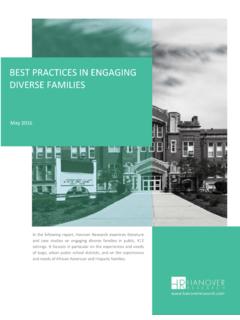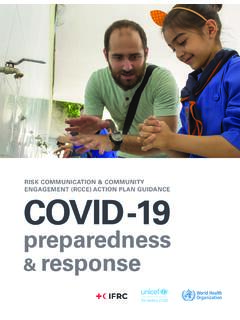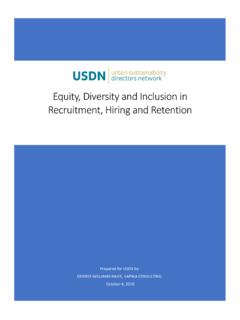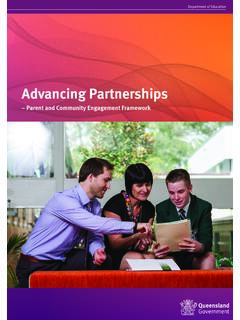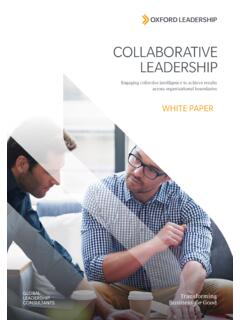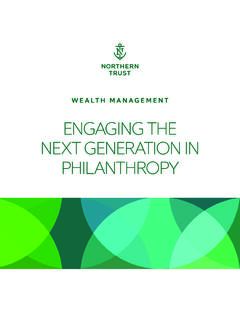Transcription of Sample Workshop Proposal 1 - University of Florida
1 communicating Ecosystem Services Using Collaborative Learning and Mental Models Page 1 Sample ACES Workshop Proposal communicating Ecosystem Services Using Collaborative Learning and Mental Models (All day Workshop can be adapted to half day if organizers feel this would fit better with overall pre- Workshop agenda. This Proposal is for the all-day version.) Why this Workshop is important: engaging stakeholders in ecosystem service management is one of the greatest challenges facing researchers conducting assessments and policy makers implementing science based programs. High impact communications about the value of ecosystem services can motivate people to act in ways that protect and sustain the services they care about. Decision-making about ecosystem services requires engaging people with diverse and conflicting perspectives in dialogues about what is at stake, who benefits and who stands to lose.
2 This Workshop provides participants with practical and effective techniques immediately applicable in a variety of contexts to improve ecosystem service communication and stakeholder engagement strategies. Collaborative Learning is a powerful stakeholder engagement process that can move groups forward in spite of conflicts, uncertainty and complexity. Collaborative Learning, designed with knowledge of the mental models used by stakeholders, can reduce conflict, contribute to development of shared meaning among the group and facilitate actions that sustain ecosystem services recognized as important. Who should attend this Workshop ? Ecosystem services professionals working in research, policy and management whose work depends upon effective science communication, collaborative partnerships and on-going adaptive management approaches to value, manage and sustain ecosystem services.
3 This Workshop provides resources to design stakeholder processes and to improve communication and learning within existing projects to achieve desired outcomes. Participant experience will be used throughout the Workshop to illustrate principles and connect techniques to participants work in ecosystem service communication. What participants will learn during the Workshop : Collaborative Learning is a versatile and practical approach to ecosystem service communication. It is used to engage public and professional groups and build effective stakeholder teams to identify shared goals and develop action oriented strategies for achieving those goals. Participants will begin by identifying current challenges of ecosystem service communication. Then, using the Sustaining Coastal Landscapes and Community Benefits ecosystem service valuation project in Maine as a case study, participants will learn how to apply the four phases of Collaborative Learning to their own work.
4 Participants will learn how to conduct a stakeholder assessment and how to use situation mapping to build shared understanding, identify sources of conflict and reveal opportunities for making progress. Participants will learn and practice three skills critical for communicating ecosystem services: active listening, skillful discussion and appreciation of mental models. Knowledge of the mental models people use to think about ecosystem communicating Ecosystem Services Using Collaborative Learning and Mental Models Page 2 services, their value and tradeoffs can improve the effectiveness of communication that bridges gaps and motivates management and policy actions. Moving decision makers from awareness to collaborative action can be accomplished with the six-step From Ideas to Action process of Collaborative Learning. Participants will learn this process and receive the worksheets to implement this powerful process in their work.
5 Evaluating stakeholder involvement and facilitating on-going partnerships benefits from audience poling technology and careful analysis of stakeholder input. The benefits of applying qualitative data analysis methods to evaluate, categorize and prioritize input will be discussed. The training concludes by acknowledging the challenges faced by change agents and ways you can design your ecosystem services communication to take advantage of the five most powerful qualities of ideas that capture the hearts and minds of people to foster change. At the end of the all day Workshop , participants should be able to: Identify the scope of ecosystem service communication challenges Define Collaborative Learning and describe how it can be adapted to their work with ecosystem services Describe mental models of ecosystem services and the role these models play in communicating about ecosystem services Describe ways to apply Collaborative Learning to improve communication about ecosystem services Describe the four phases of Collaborative Learning Assess stakeholders in a Collaborative Learning process Design a Collaborative Learning process to engage diverse stakeholders in ecosystem services decision-making Evaluate and analyze stakeholder input into an ecosystem services project action strategy and time line Outline for Collaborative Learning Training (time for breaks and lunch will be included) I.
6 Welcome and Workshop overview This orientation includes a participatory activity to introduce the concept of motivation for using the Collaborative Learning approach in ecosystem services communication. II. Collaborative Learning How does it work in the real world? This interactive power point presentation using key pad poling technology demonstrates how Collaborative Learning is used to build effective partnerships and introduces the four phases of Collaborative Learning using a case study involving riparian buffer ecosystem services tradeoffs. III. Phase I: Assessment How will Collaborative Learning apply to my work? communicating Ecosystem Services Using Collaborative Learning and Mental Models Page 3 Learn how to assess the potential for collaboration of a situation. Participants will build shared understanding by creating a situation map and stakeholder assessment that captures the diversity of perspectives and reveals shared goals based upon ecosystem services projects.
7 IV. Phase II: Designing a Collaborative Learning Process: Learn about the principles that must be incorporated into the design of a Collaborative Learning process and the diverse ways in which Collaborative Learning can adapt to the needs of a particular group and nature of an issue. Interactive discussion will model the technique of skillful discussion . V. Practice Three Skills for Collaborative Learning Through interactive exercises, including a listening walk, learn how active listening, skillful discussion and mental models are used to increase engagement and impact of a Collaborative Learning process. VI. Phase III: Implementing a Collaborative Practice moving from ideas to actions through focused problem solving activities oriented to producing measurable outcomes. Ideas to Action 6 Step Process for Ecosystem Services Communication Moving from Individual Reflection to Group Brainstorm Ideas for Improvement 1.
8 Generate your ideas for improving the situation ( The way I see it participatory exercise) 2. Include a listening session for most promising ideas 3. Discuss and evaluate individual ideas in small group brainstorm. Identify Most Promising Ideas (participatory exercise) using criteria agreed upon by the group Develop Action Strategies with a Path to Outcomes 4. Move from Ideas to Action participatory exercise 5. Visualize the Path from Action to Outcomes- participatory exercise 6. Develop Measures of Success and accountability to evaluate progress and guide adaptive management for long term projects complete group Worksheet VII. Phase IV: Evaluating & managing progress to achieve shared goals. Learn about and apply techniques to evaluate a Collaborative Learning process, including keypad polling and qualitative data analysis methods to categorize and prioritize group outputs.
9 VIII. The Challenges of Change communicating Ecosystem Services Using Collaborative Learning and Mental Models Page 4 Learn how you can design your projects to take advantage of the five most powerful qualities of ideas that capture attention and spread awareness. Workshop materials will be provided electronically and as hard copies during the Workshop . Presenter Qualifications Dr. Feurt has developed and presented environmental communicaiton trainings nationally and internationally for over 30 years for the National Park Service, Peace Corps, Smithsonian Institute, Academia and the National Estuarine Research Reserve System (NERRS). She has been a professor of Enviornmental Studies at UNE for the past 17 years. Dr Feurt s courses focus on environmental communication and stakeholder engagement in sustainability science. The training proposed here was developed in 2011as a two day course, Working Together to Get Things Done, and delivered to 9 NERRS sites in 2012 and 2013 , including an international training in Mexico.
10 Dr Feurt developed this training from her dissertation research and 10 years of applied research experience with stakeholder engagement for ecosystem service management in New England. Dr. Feurt delivers the training, has written the materials and actively engages the audience in issues relevant to their work. The case study embedded in this Workshop , Sustaining Coastal Landscapes and Community Benefits, is a stakeholder driven, ecosystem service valuation and communication, collaborative research project with the Wells NERR and Clark University . This case study focused on riparian buffer ecosystem services combining ecological assessment, a choice experiment, mental modeling and a communications audit. This Workshop focuses on the communication aspects of this four year project. Contact information: Christine Feurt, University of New England Director, Center for Sustainable communities Department of Environmental Studies 11 Hills Beach Road Biddeford, ME 04005-9599 207-602-2834 fax 207-602-5926 Coordinator, Coastal Training Program Wells National Estuarine Research Reserve 342 Laudholm Farm Road Wells, ME 04090 207-646-1555 x 111 Fax 207-646-2930




